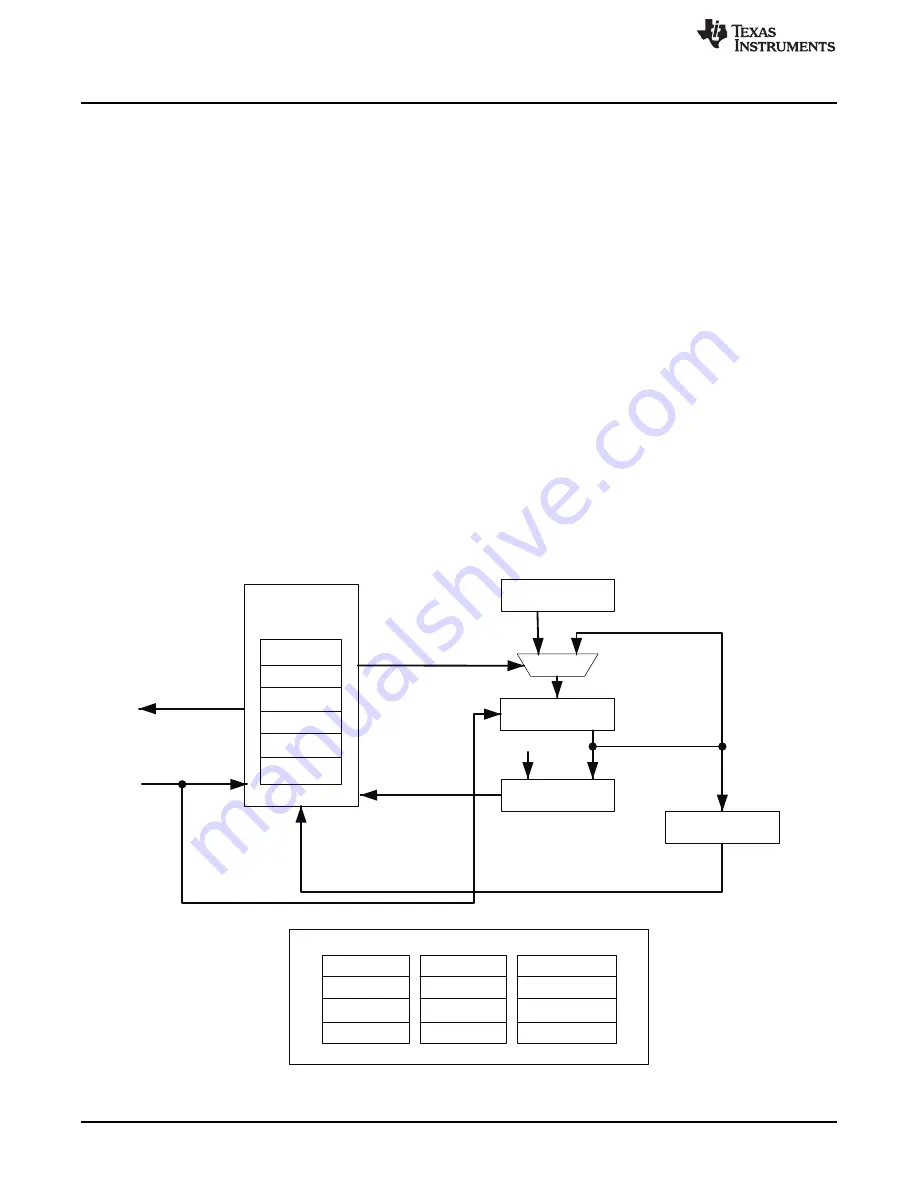
Control /Clock/
Interrupt
Generation
WDTCTL
WDTICR
WDTRIS
WDTMIS
WDTLOCK
WDTTEST
WDTLOAD
WDTVALUE
Comparator
32-Bit Down
Counter
0x0000.0000
Interrupt
System Clock/
OSCCLK
Identification Registers
WDTPCellID0
WDTPeriphID0
WDTPeriphID4
WDTPCellID1
WDTPeriphID1
WDTPeriphID5
WDTPCellID2
WDTPeriphID2
WDTPeriphID6
WDTPCellID3
WDTPeriphID3
WDTPeriphID7
Introduction
332
SPRUHE8E – October 2012 – Revised November 2019
Copyright © 2012–2019, Texas Instruments Incorporated
M3 Watchdog Timers
3.1
Introduction
The watchdog timer is used to regain control when a system has failed due to a software error or due to
the failure of an external device to respond in the expected way. The M3 Subsystem has two watchdog
timer modules; one module is clocked by the system clock (Watchdog Timer 0) and the other is clocked
by the OSCCLK (Watchdog Timer 1). The two modules are identical except that WDT1 is in a different
clock domain, and therefore requires synchronizers. As a result, WDT1 has a bit defined in the watchdog
timer control (WDTCTL) register to indicate when a write to a WDT1 register is complete. Software can
use this bit to ensure that the previous access has completed before starting the next access.
The watchdog timer modules include the following features:
•
32-bit down counter with a programmable load register
•
Separate watchdog clock with an enable
•
Programmable interrupt generation logic with interrupt masking
•
Lock register protection from runaway software
•
Reset generation logic with an enable/disable
•
User-enabled stalling when the microcontroller asserts the CPU Halt flag during debug
The watchdog timer can be configured to generate an interrupt to the controller on its first time-out, and to
generate a reset signal on its second time-out. Once the watchdog timer has been configured, the lock
register can be written to prevent the timer configuration from being inadvertently altered.
3.1.1 Block Diagram
The watchdog timer module block diagram is shown in
Figure 3-1. Watchdog Timer Module Block Diagram
















































